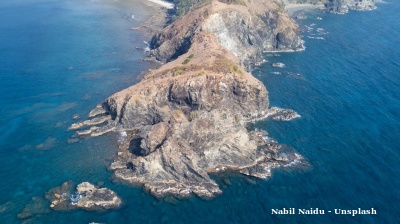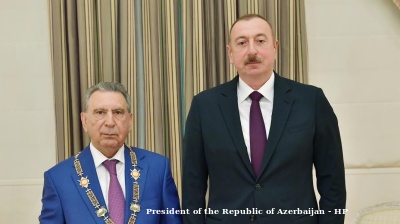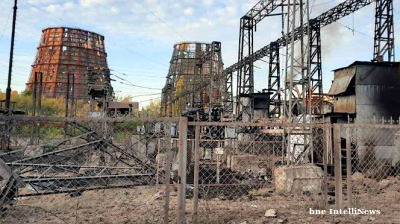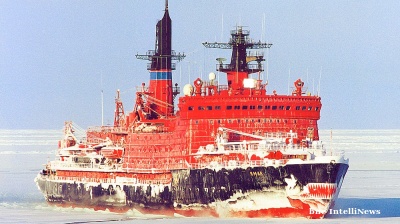Russia’s RUB25.7 trillion ($390bn) investments planned for the 12 national projects are getting underway and the state will inject the equivalent of a quarter of the value of the whole economy in 2018 into the economy over the investment period, or additional spending of 4% of GDP each year. The lion's share of investment will go into building roads.
The programme is designed to transform the economy, but it is off to a slow start and actually the planned spending is about a fifth of what is needed to bring the quality of Russia's economy up to the standard of developed markets, say experts. Moreover, it seems that the Kremlin has bitten off more than it can chew: VTB Capital's (VTBC's) chief economist Alexander Isakov said in a report that most of the deadlines are likely to be missed.
"In order to improve the probability of achieving most of its targets, the government might need to increase the volume of allocated resources" from its current level of RUB25.6 trillion ($400bn), said Isakov. However, in a seperate report VTB also said that the bulk of the infrastructure spending will go on roads and there the programme is not so far behind and can catch up over the next two years. But even if the deadlines are missed the investment itself is expected to have a major positive effect and bring Russia's infrastrcuture up to the level of Malaysia, if not that of Germany.
Road to somewhere
Investment into roads will take up the largest part of infrastrcure spending and should have the greatest beneficial effect on the economy. Just under half (45%) of all the spending will go on infrastructure and two thirds (63%) of that part of the spending will go on roads alone, with the rest spent on waterways (14%) and railways (20%), plus a little bit (2%) to upgrade airports.

Analysts believe that the spending will add about 1% compound average growth rate (CAGR) to Russia’s GDP growth on top of the current expectations for 1-2% growth a year, which is capped by Russia’s structural constraints.
The almost $177bn earmarked for investment into infrastructure is equivalent to 11% of GDP – an enormous sum – but actually it is about a fifth of the estimated $1 trillion Russia needs to spend to bring its infrastructure up to the standard of a western developed economy.
“According to the WEF Global Competitiveness Report, based on average of selected country’s data, a 1 point increase in the overall infrastructure quality index requires investment of an extra 2.4-2.8% of GDP. As such, the infrastructure part of Russian national projects would lead to four to five points improvement of index and shift Russia closer to Malaysia,” VTB said in a report. “In order to reach the group of leading economies, Russia needs to add another 15 points to the infrastructure quality index, and as such to invest about $1 trillion (including maintenance) in its infrastructure.”

Still, the amount dedicated to infrastructure investment will lift the Russian spend from the already respectable 2.5% of GDP a year the state has been investing on average until now to a healthy 3-4% of GDP in 2019-24. To put that into context the typical investment into infrastructure to just maintain the status quo runs at 0.5-1% of GDP in most countries. Russia has to spend about $10bn-15bn a year on maintenance just to keep what it already has up to scratch, which was half of the $30bn it spent in 2017-2018.
As things stand the $45bn a year that Russia is intending to spend on infrastructure through to 2025 will bring its infrastructure up to the level of Malaysia, but it would need to spend $100bn a year to reach the level of the developed countries. Given Russia has managed to accumulate $300bn in reserves between 2014 and now, this spending is not impossible and as the infrastructure spending has a multiplier effect that leads to economic growth the programme could start a investment-growth virtuous circle turning.
This is actually the Kremlin’s second attempt at launching a massive infrastructure programme. In 2007 inflation fell into single digits for the first time since the collapse of the Soviet Union in 1991 and Russia had built up $600bn in hard currency reserves as the budget was in comfortable profit thanks to the $100-plus price of oil. President Vladimir Putin announced a $1 trillion infrastructure investment bonanza at the start of 2008, but the programme never got off the ground as the Kremlin needed every spare penny it had by September as the global financial crisis hit.
Russia’s plans are running behind those of other emerging markets like India, the Philippines and Egypt that spent 25-35% of GDP between 2014-2018 and are now increasing the investment even more to 30-40% over the next few years. The point of infrastructure investment is that it acts as an economic multiplier adding 1-2.2x the cash value invested to the value of the economy, depending on how well the money is spent.
The implementation of the spending is also running behind the plan, but its starting to catch up, said VTBC said in a report.
The very largest plans are the most likely to face delays but these only account for about 20-30% of the total spending. And with 45% of spending on roads, this is the one part of infrastructure spending that is already underway and being implemented by well worn public-private partnerships, so should be relatively easy to ramp up. The rail spending (20%) is the one sector where these public-private partnerships are entirely new and will be the most difficult to set up.
Trains, planes, cars and boats
Investment into roads includes transforming regional roads to “safe and quality” roads, or upgrading 41,000km out of the total 511,000km road network, which will cost $64bn, or 35% of the total spent on roads. At the same time links between cities will be improved by constructing some 2,300km of high-speed motorways.
The railways part of the programme targets high-speed passenger trains on one hand and increasing the freight capacity of Russia’s key railway routes – North-South, WestEast (including BAM and Transsib) and Europe-West China – on the other.
A few large railways projects are also included into several projects unrelated to the railway-specific segment – these are the Northern Latitude Railway as a part of the Northeast Passage and Moscow Transport Hub as a part of Connecting centres of economic growth.
The plan to develop waterways targets a capacity increase of 30% at sea ports. Taman on the Black Sea is the largest greenfield, while a number of smaller coal terminals are to be built in the Russian Far East as well.
The plan also envisages the development of inland waterways, with port capacity to increase 70%. The third part of the waterways plan is to develop the Northeast Passage, with the aim being to triple traffic. In order to reach this target, several ports are to be expanded and a new fleet of nuclear ships built.
The last part of the infrastructure investment plan is to improve inter-regional air communication to increase the share of non-Moscow traffic from 37% to 51%. In order to reach this level, the plan is to rebuild 48 regional airports and 20 infrastructure support facilities.
PPP Funding
The state is going to fund two thirds of all this investment, with the rest supposed to come from private sources in private-public partnership arrangements.
The state has already been running these PPP deals successfully in developing the road network and Russia has already seen the advent of several toll road projects.
However, the share of private participation depends on the type of transport: the state will cover circa 88% of the road and airport investment, 48% of the waterways, but private investors are expected to pay for 95% of the rail investments.
PPP deals took off in 2010 and have grown from five to 18 in operation between 2015 and 2019, but by last year a total of 418 PPP contracts had been signed. The advantage for the state in a PPP deal is they allow the state to put off its contributions; the investors cover the immediate capex costs and the government contributes with investment guarantees in the future should the project fail to generate the sort of returns the investors expect.
“Among the largest PPP projects completed in recent years in the form of concessions were roads, including the high-speed motorway between Moscow and St Petersburg and the M11 western high-speed diameter in St Petersburg. On average, the state covers 40-60% of the overall project’s budget, while the remainder is covered by leverage and equity,” VTB reported.
The two most active participants at the moment are Russian state banks Gazprombank and VTB, which are also key for financing infrastructure. Since 2009, VTB has successfully completed financing for three projects, with infrastructure worth $2.2bn, while Gazprombank financed four worth $1bn. The largest investor among contractors is Autoban, a Russian construction company.
While there have been many delays in getting the national projects off the ground, several projects have already begun and more are moving out of the design phase, which takes one to two years, and will enter the construction phase next year.

|
Federal Projects status |
|||
|
|
Pre-design |
design and financing |
construction |
|
Road |
Tolyatti bypass, $2bn |
Moscow - Kazan, $8bn |
Road network development, $64bn |
|
Rail |
Moscow - St. Petersburg, $23bn |
Rail transport and transit, $23bn; Northern Latitudinal Railway $4bn; Moscow - Nizhny Novgorod, $10bn |
|
|
Waterway |
|
Northeast Passage, $7bn; Taman port, $3bn |
Coal terminal Lavna & Chaika, $1.3bn; Cargo complex in Muchka, $0.4bn |
|
Airport |
|
|
Development of regional airports & routes, $4bn |
|
Source: Interregional Social Organization "Mayskiy Ukaz", Press, VTB Capital Research |
|||
Government figures released recently showed that in the first nine months of 2019 only 52% of the funds allocated for the year had been spent. Another independent study found that the benefits of economic growth this year are likely to be wiped out by the costs of Putin's VAT increase.
“Overall, the national projects are still running behind the initial plan. However, in our view, the lag is not so large as to preclude a catch-up. While the state will, in our view, probably spend only $15bn of the initially planned $21bn this year, we expect this amount to grow over 2020-22 to reach $25bn-35bn per annum. Moreover, according to recent comments from MinFin, unspent amounts from previous years will be carried over to future years,” says VTBC.
Features

Andaman gas find signals fresh momentum in India’s deepwater exploration
India’s latest gas discovery in the under-explored Andaman-Nicobar Basin could become a turning point for the country’s domestic upstream production and energy security

The fall of Azerbaijan's Grey Cardinal
Ramiz Mehdiyev served as Azerbaijan's Presidential Administration head for 24 consecutive years, making him arguably the most powerful unelected official in post-Soviet Azerbaijan until his dramatic fall from grace.

Ambition, access and acceleration – Uzbekistan’s Startup Garage opens free academy for entrepreneurship
Aim is to train 50,000 young founders by 2030.

Ukraine’s growing energy crisis promises a cold and dark winter
Since the summer, Kyiv has changed tactics. Given the almost complete failure of Western oil sanctions to curb Russian oil exports, it has been targeting Russian oil refineries. The Kremlin has struck back, targeting Ukraine's power system.




